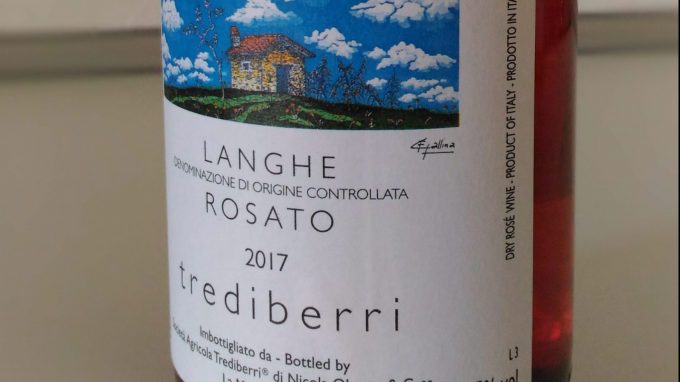
Published
7 April 2018
Tags
New Release 2017 Langhe Rosato, Trediberri
Just when we thought Spring was arriving, the cold and frost set in again. It’s never too cold for rosato, though! Italian rosato’s seem to be becoming more popular. The best examples tend to offer a depth of flavour, colour, and texture that is characteristic of their indigenous grape varieties. Usually darker pink than the well-loved Provence styles, they are a true reflection of place and grape. They also have a great food-matching ability. They pair well with fish and antipasti as well as with richer dishes, due to vibrant acidity & sapid minerality that comes from ancient sedimentary soils, such as the Langhe.
We’re thrilled to unveil Trediberri’s new Langhe Rosato 2017! In previous vintages he opted for a simple Nebbiolo/Barbera blend, leaving some 3 g RS too, but in 2017 he’s cracked it, building in drinkability & complexity through a unique mix of indigenous grapes, and a drier style (closer to 1 g RS). Trediberri are best known for their extremely fine range of reds, from Barbera d’Alba, Dolcetto, and Langhe Nebbiolo, to classic Barolo La Morra, and Barolo Rocche dell’Annunziata, their La Morra Cru. They started making rosato in the 2015 vintage, as they wanted to find a way of vinifying the Nebbiolo grapes that were not destined for their Barolo or Langhe Nebbiolo. With each new release the wine gets better, and the 2017 is delicious.
When we visited earlier this month, Nicola had not yet decided the exact blend for the 2017, so he conducted a ‘panel tasting’ involving a blind tasting of two possible blends. Both blends were based on 30% Barbera, 30% Dolcetto, 20% Freisa, and 20% Nebbiolo. The first had the addition of 5% Nebbiolo from the Langhe Nebbiolo 2017 added to the mix. It was dark pink and very fragrant, with aromas of bright cherry drops and raspberry. The extra Nebbiolo added texture and structure, but we unanimously agreed that the second sample, without the 5% Nebbiolo added, was the winner. This one was slightly lighter pink, with a softer perfume, notes of wild strawberry, raspberry and a hint of rose, leading to juicy little red berries on the palate, with lively acidity, and a smoother mouthfeel. It was harmonious, with just the right amount of Nebbiolo tannin adding texture and poise, and a lingering salinity on the finish.
The vinification involved 32 hours skin contact prior to fermentation in cement and stainless steel for about 12 days. There was no malolactic, and the wine was bottled on the 9th February. The Nebbiolo comes from Rocche dell’Annunziata, the Barbera is from the Trediberri vineyards in Torriglione and from Roero, the Freisa and the Dolcetto are both from Roero.